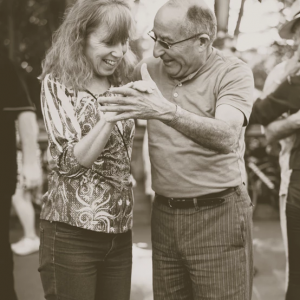Dancing Your Age Away: How Dance Supports Healthy Aging

Dancing Your Age Away: How Dance Supports Healthy Aging
February 19, 2019
Martha Graham once said, “Dance is the hidden language of the soul.” For many of us, it’s as essential as breathing or eating. We dance as a way to celebrate or in acknowledgment of a special day. We even shake our hips to our favorite songs … as long as no one is watching!
And there’s no doubt that dance can also be beneficial for healthy aging. Regular dance strengthens our bodies and improves our balance, flexibility, joint health, bone density, and cardiovascular health. There’s also new research showing a significant association between dance and a reduction in the risk of (ADL) disabilities in older women.
Research even shows the mental, physical, emotional, and social aspects of dance increase white matter (WM) in the brain, which typically declines as we age. Increased white matter can help improve memory, cognitive flexibility, verbal skills, and comprehension. For this reason, dance has been shown to be therapeutic for patients with Alzheimer’s and dementia. This is also true if patients listen and dance to familiar music. Dance therapy has also been successful for patients suffering from Parkinson’s disease or chronic autoimmune diseases.
But let’s not forget that dance, first and foremost, can be fun, providing a form of self-expression and recreation that can be life-affirming. Don’t believe us? Check out Toni Basil cutting a rug at the apparently agile age of 74!







